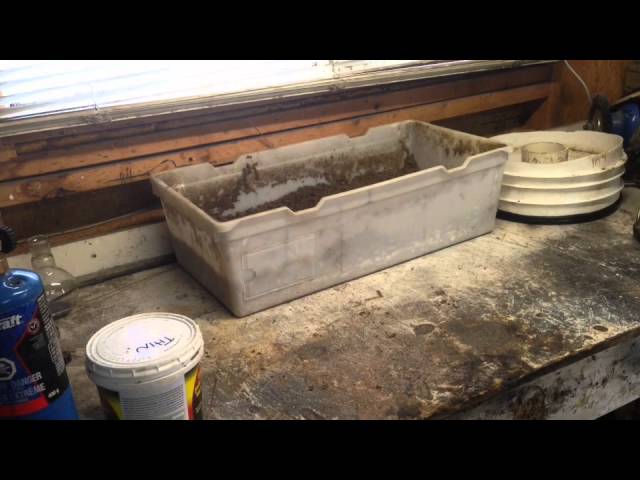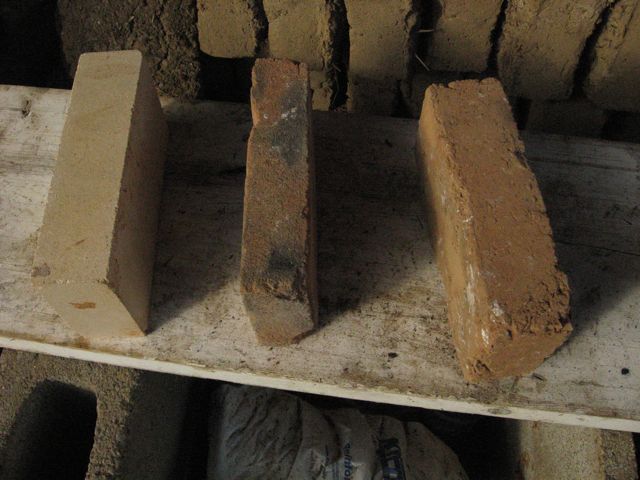Well now, let me tell you, making your own refractory bricks, or firebricks as some folks call ’em, ain’t as hard as it sounds. First thing you gotta know is, these firebricks are used for all sorts of things—kilns, ovens, fireboxes, even chimneys. They’re special ’cause they can take all that heat and keep right on going. They don’t melt or crack like regular bricks, so they’re mighty useful in any place where you gotta deal with high temperatures. Now, let me tell you how you can make ’em at home, with just a few simple things.
Now, to make your own refractory bricks, you gotta start with a good mix. You see, you can use all sorts of things. One simple method is using sand, perlite, and sodium silicate. Yup, that’s right, stuff like drain cleaner and kitty litter. If you don’t know what sodium silicate is, it’s basically a fancy name for a high-temperature glue. You mix it with sand and perlite, and it sticks everything together nice and strong, making a good brick that can handle heat.


First off, get yourself some sand. Sand’s easy enough to get from just about anywhere, and you can use that for your base. Then, mix in a little perlite. Perlite’s that lightweight stuff you see in plant pots. It’s got air in it, so it helps your bricks not be too heavy. When you mix it all together with your sodium silicate, you’ve got yourself a brick that can stand up to the heat!
Now, another good material for making these bricks is ceramic fiber insulation. This stuff is light as a feather and can stand up to temperatures as high as 2400°F. It’s not too expensive either, so it’s a good choice if you’re making a big batch of bricks. You can get it in sheets and just cut it to the size you need. And it works just as good as those fancy firebricks you’d buy from the store, but it won’t break your bank.
But, there’s one thing you need to know—don’t go using regular old concrete bricks. Concrete just can’t handle the heat like firebricks can. If you try to use them, you might end up with cracks or a big ol’ mess when things get too hot. Always make sure you use clay bricks, or ones made from special heat-resistant materials like fireclay or bauxite.
- Fireclay: This is a type of clay that can handle high temperatures. It’s a good material for making firebricks because it’s naturally heat-resistant.
- Bauxite: This mineral’s got a lot of aluminum oxide, and it can take a lot of heat too.
- Perlite: As mentioned, this is a lightweight material that helps make your firebrick easier to work with.
- Sodium Silicate: This is your “glue” that holds everything together. It’s strong and sticks well even at high temperatures.
Another thing you might hear folks talk about is castable refractories. These are just a mix of materials that you can pour into a mold, and they’ll harden into a solid brick-like material. This stuff is easy to mix and use, and it’s cheaper than buying pre-made firebricks. You just mix it up, pour it into a mold, and let it set. After a bit, you’ll have a brick that can handle high heat just fine.
But whether you’re making your bricks from scratch or using a castable mix, always remember one thing—heat resistance is the most important part. If it can’t take the heat, it won’t work. So, make sure you’re using the right materials, and if you’re in doubt, don’t be shy about asking someone who knows more about this stuff.
Making your own refractory bricks is a good way to save some money, and it can be a fun project if you’re up for it. Plus, you can make exactly the size and shape you need, which is handy if you’re building something like a forge or a kiln. Just be sure to follow the steps right, and you’ll have yourself a set of bricks that’ll last through all kinds of heat.


Tags:[DIY, refractory bricks, firebricks, high-temperature materials, sodium silicate, ceramic fiber, fireclay, bauxite, castable refractories, homemade firebricks, heat-resistant bricks]


